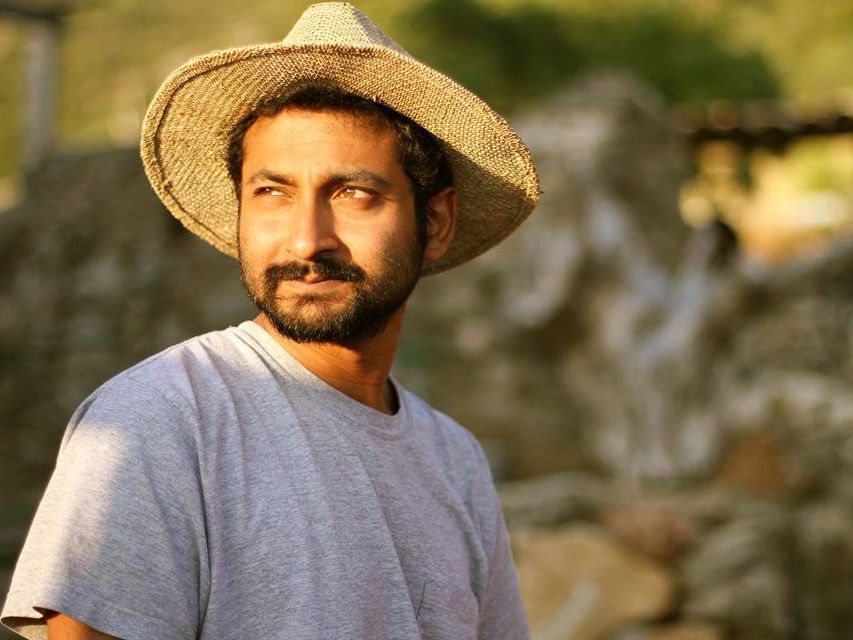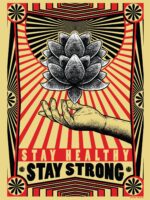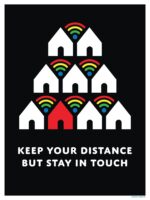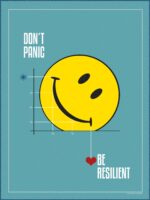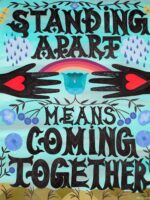Cómo los líderes empresariales pueden enfrentar la crisis de salud mental Cómo los líderes empresariales pueden enfrentar la crisis de salud mental

Es el Día mundial de la Salud Mental y aún es un tema que nos elude en el mundo empresarial. Tal vez porque se siente como un tema privado, difícilmente entendemos nuestro rol frente a un reto que es altamente público.
Hace unos meses, tuve la oportunidad de tener una experiencia inmersiva en uno de los encuentros más importantes a nivel global. Entre las palabras de bienvenida, un líder empresarial explicaba: “El bienestar emocional tiene un rol central en el sector privado, es fundamental para la innovación y colaboración,” dijo Edwin Macharia, Global Managing Partner de Dalberg, frente a más de 1000 personas que se dieron cita en la ciudad española de Bilbao la primera semana de junio.
El encuentro global “The Wellbeing Summit” o Cumbre del Bienestar, juntó a las mentes más influyentes en la intersección de la salud mental, el bienestar integral, el activismo y la investigación científica. Este encuentro, este año 2022 no es para menos: de manera colectiva, los ponentes presentaron un reto enorme al que nos enfrentamos como sociedad de frente al bienestar integral y la salud mental.
La OMS define a la salud como “el estado de bienestar físico, mental y social, no solamente la ausencia de enfermedad” y a la salud mental como “el estado de bienestar en el que cada individuo logra su potencial, se enfrenta a los estreses normales de la vida, puede trabajar productiva y fructíferamente, y puede contribuir a su comunidad.”
La pandemia y sus secuelas presentan retos sin precedentes para la humanidad en términos de salud mental. En los últimos dos años, la estimación conservadora de suicidios está en 700,000 personas anuales; sin explicaciones alternativas, los médicos continúan atribuyendo más y más enfermedades al estrés.
Si el número previo nos genera una fuerte impresión, al llevarlo a un lapso más concreto, cada hora del día, se suicidan 81 personas en el mundo; y a ello, también encontramos el fenómeno aterrador de school shootings, los feminicidios, los enfrentamientos por causas raciales, y más. Se estima que la mala salud mental le cuesta a la economía mundial entre $3 y $5 trillones al año en productividad reducida.
En América Latina, la salud mental continúa acarreando un tabú en el mundo empresarial, se lo habla poco pero se siente su efecto cada vez más seguido. En el mejor de los casos, se lo aborda de manera tangencial, solamente cuando los impactos se hacen visibles. Pero los diagnósticos de patologías de salud mental son sólo el primer paso. El liderazgo integral debe abordar el tema mediante prácticas, servicios y acciones tangibles que arrancan desde el lado preventivo.
Uno de los ponentes del Wellbeing Summit, el neuro-científico Richard Davidson , presentó una colección de hallazgos científicos sobre lo que él llama la “neuroplasticidad’ del cerebro – nuestra cualidad de tener una mente que puede ser moldeable mediante repetición y prácticas que re configuran cómo está programada. La tesis principal es que la compasión y felicidad es un habilidad que se puede aprender:
- El cerebro de un monje en estado meditativo es algo replicable – Davidson propone que la habilidad de estar presente, consciente de sus propios pensamientos es un camino de prevención buscando el bienestar mental. En un estudio del 2004 (Lutz et. al) se midieron las oscilaciones gamma, que predicen niveles de claridad de percepción, en el cerebro de un monje budista con años de experiencia en meditación. Las oscilaciones de las ondas en el cerebro de los monjes en estado meditativo eran significativamente más amplias. Es decir, cuando el cerebro se encuentra presente y perceptivo, las ondas gamma se abren. En estados de miedo o incertidumbre se contraen. Lo importante, es que los monjes tienen la capacidad de controlarlo con práctica, y que la incorporación de hábitos de manera consistente puede crear el mismo efecto en la población general.
- La capacidad de conexión con otros re-configura el cerebro – Un estudio del 2013 (Weng et al) trabajó con un grupo de personas ofreciéndoles capacitación en técnicas meditativas de cultivar compasión. En sólo dos semanas, los neurocientíficos encontraron diferencias tangibles en imágenes de escaneos cerebrales de quienes habían participado – sus niveles de “conectividad DPLFC-Nacc”, que se asocia con comportamiento altruista (un indicador de salud mental), se muestran claramente dilatados en los scans.
- El sentido de propósito correlaciona con la longevidad – Un meta-análisis de estudios de la última década (Cohen et. al, 2016) determinó que el sentido de propósito (incluso en las actividades diarias más mundanas) es un predictor potente de longevidad y prevención de eventos cardiovasculares. Los efectos del bienestar son reales – un estudio del 2019 de Evans y Soliman presentaron una fuerte correlación entre la expectativa de vida promedio y el bienestar en 151 países: aquellos con percepción de bienestar más alta tienen hasta 30 años más de vida en promedio que quienes viven en países bajos niveles de bienestar emocional.
Hace un siglo, el hábito de tomarse 3 minutos después de cada comida para lavarse los dientes no existía a nivel global. Sin embargo, como sociedad, lo incorporamos como una acción de importancia para nuestra supervivencia como especie. Este principio de incentivar hábitos, promoviendo una mente más saludable, puede tener efectos enormes en las distintas crisis que enfrentamos. La diferencia es que esta vez contamos con avances de tecnología móvil y de wearables (relojes inteligentes, tracking devices, etc) que nos permiten acelerar la incorporación de buenos hábitos de manera exponencial.
Por esta razón, no sorprende que el Dr Barry Kerzin, el médico personal del Dalai Lama, se apoya en una aplicación móvil para hacer prácticas de compasión y altruismo más accesibles a la población, o que Betterfly , la start-up unicornio Latinoamericana incentiva buenos hábitos meditativos recompensando a los usuarios con medallas que facilitan la donación a causas. El potencial de generar impacto positivo mediante modelos de negocio que innovan con propósito es enorme.
Los retos más grandes que enfrentamos como humanidad siempre han presentado oportunidades para el empresariado que quiere marcar una diferencia.
Las buenas noticias son que podemos entrenar nuestros cerebros para crear bienestar mental y que podemos promover estos hábitos gracias a los avances de la tecnología móvil.
Con una oportunidad como esta, es cuestión de tiempo para que el sector empresarial tome el liderazgo para escalar la construcción de una sociedad más conectada consigo mismo y con su propósito. Así es cómo el mantra intangible de que “la paz interior puede crear paz para el mundo”, se convierte cada día en algo más tangible y viable conforme esta intersección única de maestros de meditación, científicos y empresarios convierten sus voluntades en una nueva realidad. Así es como el mundo empresarial puede enfrentar la crisis de salud mental: no solamente con voluntad, sino también apalancándose de tecnología y ejerciendo el liderazgo que este reto público exige.
Author bio
Michelle Arevalo-Carpenter is the Global VP of Purpose and Communities at Betterfly, the first social unicorn start-up, with operations across Latin America. Before her current role, Michelle was the CEO and co-founder of IMPAQTO, a B Corporation with a mission to support impact entrepreneurs reach their goals by building the ecosystem and network they need to thrive. Michelle is a recent mother of twins and a member of The Ecosystem Network at The Wellbeing Project.









